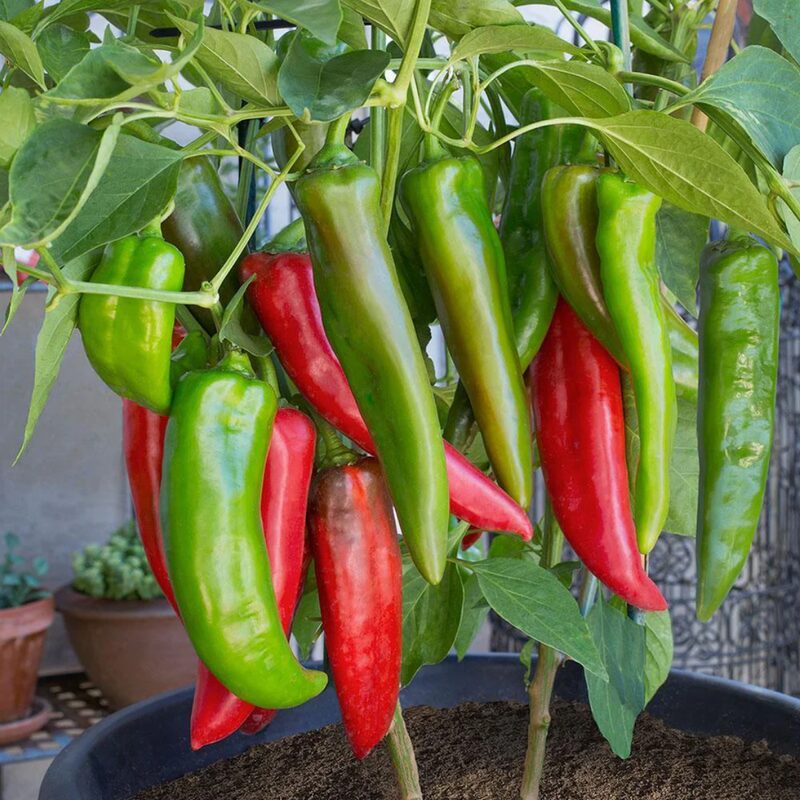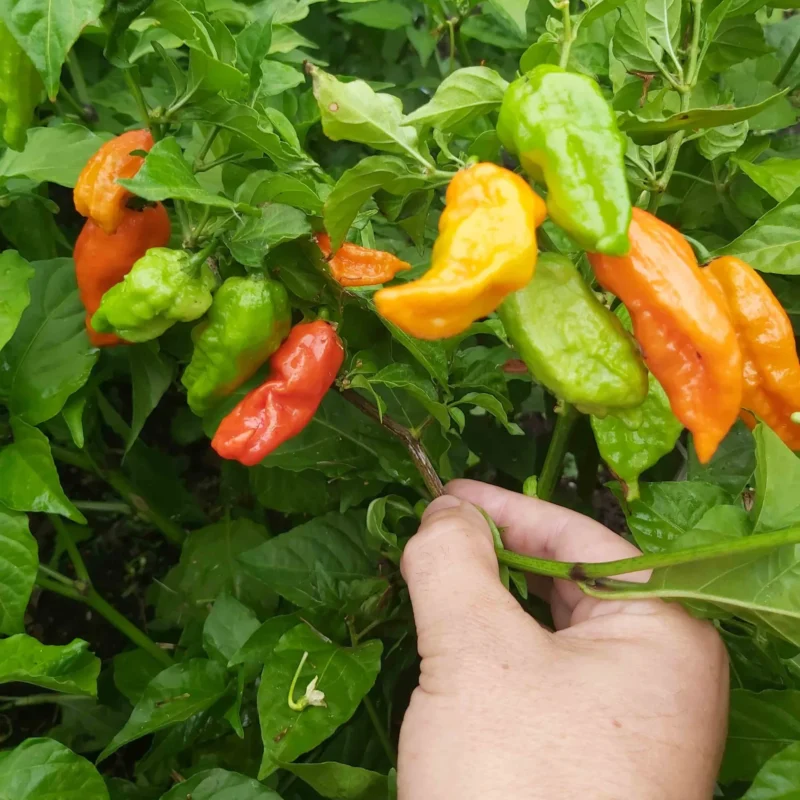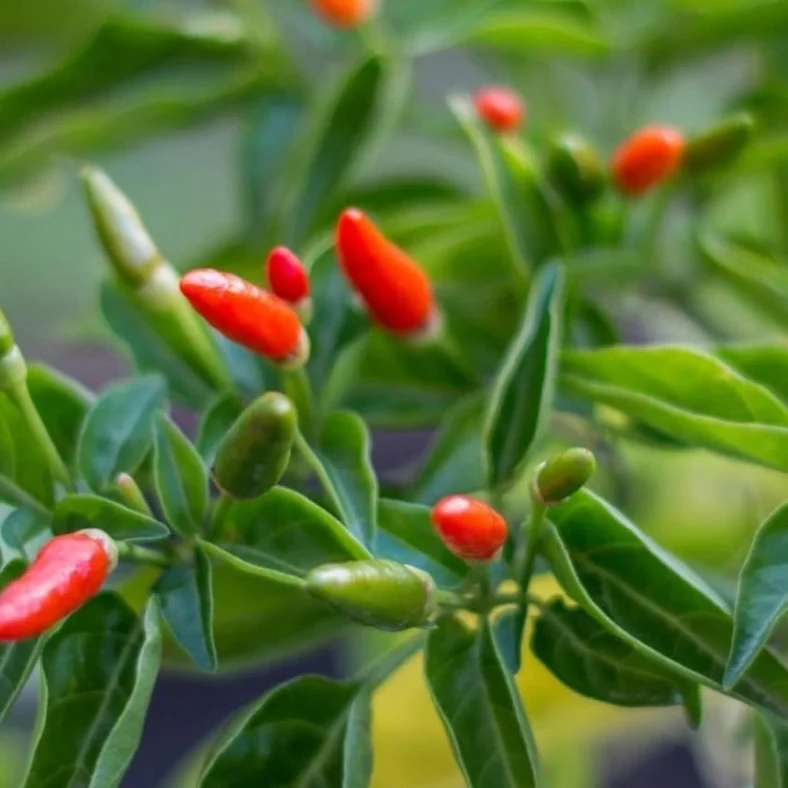Have you ever wanted to grow your own hot peppers but thought, “My garden is too small!” Don’t worry—you’re not alone! Many home gardeners in the USA face the same challenge. The good news? Growing hot peppers doesn’t require acres of land. Even with a tiny backyard or just a few pots, you can enjoy an abundant harvest of spicy goodness.
In this blog, I’ll guide you through the top 10 hot peppers perfect for small gardens. Whether you’re a beginner or an experienced gardener, these varieties are compact, flavorful, and surprisingly easy to grow. Let’s dive in and discover which ones are right for you!
Why Grow Hot Peppers in Small Gardens?

Before we get into the list, let’s talk about why hot peppers are an excellent choice for small spaces.
-
Compact Plants: Many hot pepper varieties are naturally small, making them ideal for patios, balconies, or even windowsills.
-
High Yield: Despite their size, hot peppers are prolific producers. A single plant can provide dozens of peppers.
-
Flavor and Versatility: From mild to fiery, hot peppers add flavor to your favorite dishes and can be dried, pickled, or used fresh.
-
Low Maintenance: Compared to other garden crops, hot peppers are relatively easy to care for and require minimal space, water, and attention.
Top 10 Hot Peppers for Small Gardens
Here’s a curated list of the best hot pepper varieties tailored for small spaces. Each one is a winner in flavor, size, and ease of cultivation.
1. Jalapeño

Jalapeño peppers are a gardener’s favorite for their perfect balance of heat and flavor. Known for their mild to medium heat level, they’re versatile, zesty, and perfect for adding a kick to your favorite Mexican dishes, from tacos to nachos. With a Scoville Heat Unit (SHU) range of 2,500 to 8,000, they’re just spicy enough to be exciting but not overwhelming.
These compact plants thrive in small spaces, growing well in pots or garden beds. They’re also incredibly productive, with each plant yielding dozens of plump green or red peppers. Harvest them green for a classic jalapeño flavor or let them ripen to red for a sweeter, smokier taste. Whether you’re a beginner or a seasoned gardener, jalapeños are a must-have in any small garden.
2. Habanero
Habanero peppers are the way to go if you’re a fan of intense heat. These small, lantern-shaped peppers bring tropical, fruity flavors alongside their fiery kick. With an SHU range of 100,000 to 350,000, they’re definitely not for the faint of heart. Their citrusy undertones make them an excellent addition to hot sauces, salsas, and marinades.
Habaneros are compact and thrive in containers, making them perfect for small spaces. They love warm weather and full sun, so ensure they’re in a bright spot. With their vibrant orange or red color, they double as an ornamental plant that adds beauty to your garden while delivering bold flavor to your kitchen.
3. Thai Hot Chili
Thai Hot Chili peppers are a fantastic choice for gardeners looking for bold flavor and vibrant color. These tiny peppers grow in upright clusters, making the plant productive and visually striking. Their heat is intense, with an SHU range of 50,000 to 100,000, making them a staple in Thai and other Asian cuisines.
Perfect for small spaces, these plants flourish in pots and require minimal maintenance. They produce continuously throughout the season, so you’ll always have a fresh supply for stir-fries, curries, and pickling. Their compact size also makes them ideal for balconies or small patios.
4. Cayenne
Cayenne peppers are slender, fiery red peppers that are as functional as they are beautiful. With a heat level ranging from 30,000 to 50,000 SHU, they’re a kitchen staple, often dried and ground into powder for seasoning. Their tangy, spicy flavor makes them perfect for adding heat to soups, sauces, and marinades.
These plants are space-efficient and thrive in small garden beds or containers. Cayennes love full sunlight and grow well with minimal effort, making them a favorite for beginner gardeners. A trellis or stake can help support the plant as its slender fruits begin to weigh it down.
5. Shishito

Shishito peppers are mild, sweet, and perfect for snacking or grilling. With only occasional peppers having a surprising mild heat (SHU: 100 to 1,000), they’re fun and flavorful. These Japanese-origin peppers are thin-walled and blister easily when roasted, making them a popular appetizer. Shishito plants are highly productive and compact, thriving in pots or raised garden beds. They require minimal care and continuously produce small, wrinkled peppers throughout the season.
6. Serrano

Serrano peppers bring a crisp, clean heat that’s slightly hotter than a jalapeño, ranging from 10,000 to 23,000 SHU. These slim, vibrant green or red peppers are perfect for salsas, hot sauces, and garnishing your favorite dishes.
Serrano plants are compact and highly productive, making them ideal for small gardens. They thrive in containers and require minimal care beyond regular watering and plenty of sunlight. Their continuous harvest ensures you’ll always have a fresh supply of spicy goodness throughout the growing season.
7. Tabasco
Tabasco peppers are famous for their role in creating the iconic hot sauce, but they’re also fantastic fresh or pickled. With an SHU range of 30,000 to 50,000, these tangy and spicy peppers bring a lively kick to your dishes.
Tabasco plants are compact and upright, producing clusters of small, vibrant peppers that transition from green to orange to red. They’re perfect for containers and add a colorful touch to your garden. Just give them well-draining soil and plenty of sunshine, and they’ll thrive.
8. Cherry Bomb
Cherry Bomb peppers are a delightful addition to any small garden. Their round, cherry-like shape and bright red color make them as attractive as they are tasty. With a mild to medium heat level (2,500 to 5,000 SHU), they’re perfect for pickling, stuffing, or slicing into salads.
These bushy plants fit well in containers and small garden beds. They’re easy to grow and highly productive, offering an abundant harvest of juicy, flavorful peppers throughout the season. Regular pruning helps them flourish, keeping your garden tidy and your plants healthy.
9. Ghost Pepper (Bhut Jolokia)

For thrill-seekers and spice enthusiasts, the Ghost Pepper is an exciting challenge. With an SHU range of over 1,000,000, these peppers are among the hottest in the world. Despite their intensity, they have a fruity, smoky flavor that’s perfect for making hot sauces and chutneys.
Ghost Pepper plants are surprisingly compact and thrive in pots, making them suitable for small gardens. However, they do require warm temperatures and consistent care to produce their fiery fruits. Gloves are a must when handling these peppers!
Read more: How to Grow Peach Ghost Pepper Plants: A Beginner’s Guide
10. Pequin

Pequin peppers are tiny but mighty, offering intense heat with a smoky, citrusy flavor. With a heat level of 30,000 to 60,000 SHU, they’re a great choice for drying and grinding into chili flakes or for making hot sauces. Pequin plants are bushy, compact, and ideal for small spaces. Their small, oval-shaped peppers mature from green to bright red, adding vibrant color to your garden. Pequin peppers thrive in containers and require warm temperatures and consistent care to yield their best.
Read more: How to Grow and Care Pequin Peppers
How to Grow Hot Peppers in Small Spaces
Even if you’re new to gardening, growing hot peppers is simple with the right approach.
Choosing the Right Containers
-
Use pots with drainage holes to prevent waterlogging.
-
A 5-gallon container is perfect for most pepper plants.
Soil and Fertilizer Needs
-
Opt for well-draining, nutrient-rich soil.
-
Add compost or organic fertilizer for better yields.
Watering and Sunlight
-
Hot peppers love sunlight—ensure they get at least 6-8 hours daily.
-
Water consistently but avoid overwatering; peppers prefer slightly dry conditions.
Pest and Disease Management
-
Use organic pest control methods like neem oil or introduce beneficial insects like ladybugs.
-
Check your plants regularly for signs of pests or diseases.
Read more: How to Grow Chili Peppers in Containers
Harvesting and Using Your Hot Peppers

Knowing when and how to harvest is key to maximizing your pepper plants.
-
When to Harvest: Pick peppers when they’re firm and vibrant in color.
-
How to Use: Add fresh peppers to salsas, dry them for seasoning, or pickle them for later use.
FAQs
1. What’s the easiest hot pepper to grow for beginners?
Jalapeños are the easiest for beginners—low-maintenance, highly productive, and versatile in cooking. Anaheim peppers are another mild, beginner-friendly option.
2. Can hot peppers grow indoors?
Yes! With 6-8 hours of sunlight (or grow lights), warm temperatures (70-85°F), and proper pots with drainage, hot peppers like jalapeños and cayenne thrive indoors.
3. How long do hot peppers take to grow?
Most varieties take 60-120 days from planting to harvest. Faster varieties like jalapeños take ~60 days, while habaneros may take up to 120 days.
4. How can I prevent pests from ruining my peppers?
Inspect regularly, use natural sprays (water + soap), try companion planting (basil, garlic), and apply organic solutions like neem oil or diatomaceous earth. Keep your garden clean to deter pests.
Conclusion
Growing hot peppers in small gardens isn’t just possible—it’s incredibly rewarding. With the right variety, a bit of care, and some creativity, you can enjoy a bountiful harvest of spicy goodness even in the smallest spaces. So, what are you waiting for? Pick a pepper (or two) from this list and start growing today!
Happy gardening!
